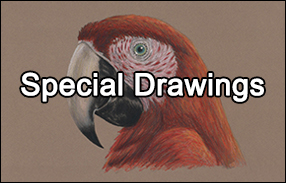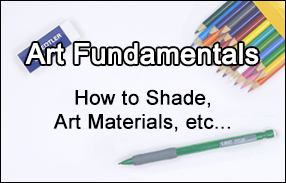In just a few steps, you'll learn how to draw this brown recluse spider using colored pencils. All the tutorials on How2DrawAnimals.com are easy to follow and great for beginners and experienced artists alike. Get art basics while sketching your favorite animals step by step. Each free tutorial on this site has a video tutorial option, as well as step-by-step photos and written text to follow along with. Have fun drawing!

Stay tuned for more free drawing lessons by:
Liking us on Facebook>>
Subscribing on YouTube.com>>
Following us on Instagram>>
To draw this brown recluse spider step by step, follow along with the video tutorial and pause after each step to go at your own pace. You may find it easier to follow the step-by-step images below the video. The new lines in each step are shown in red, so you'll know exactly what to sketch next. You may want to open the video in a new tab and use both drawing methods. Take your time and create art at your own pace.
Below you can watch a narrated step-by-step video tutorial:
For the first few steps, don't press down too hard with your pencil. Use light, smooth strokes to begin so that it's easy to erase if you make a mistake.

Step 1: Sketch a circle and a half circle as guides for the spider's abdomen and thorax. When drawing circles, keep in mind that they don't have to be perfect. They're just guides. The half circle on the left should be almost half as big as the circle on the right.
DRAWING TIP: To draw a circle, first draw four small marks for the height and width of the circle, and then connect the marks using curved lines. Sketch lightly at first so that it's easy to erase if you make a mistake. But the circles don't have to be perfect. They're just guides.

Step 2: Add an arc to the right of the circle to complete the guide for the spider's abdomen. Then sketch in two angled lines under the front part of the brown recluse's body as a guide for the first set of legs.

Step 3: Draw three more angled lines on either side of the spider's thorax for additional legs.

Step 4: Add the final three spider legs that are on the other side of the body. These will look smaller from this angle because they are farther away from the viewer.
That's it for the initial sketch! From this point on, press harder with your pencil to get a more defined sketch of a brown recluse spider.

Step 5: Now begin adding the details to your brown recluse spider sketch. On the legs, lightly sketch each segment as you follow the basic path of the guidelines. When you get all the segments on the leg right, darken the lines. You will add hairlike bristles later on, but for now, use smooth pencil strokes.

Step 6: Use the same technique to draw the second set of legs.

Step 7: Use the initial half circle shape as a guide to sketch the front part of the body or thorax. Be sure to not draw over the legs. Add some tiny circles at the tip of the head for the spider's eyes. Also draw the pedipalp that's on this side of the body. Brown recluse spiders use their pedipalps for sensing and handling their prey.

Step 8: Finalize the spider's abdomen shape, and add in the details of the mouthparts (fangs) and second pedipalp.

Step 9: Using smooth pencil lines, begin adding the segments of the legs on the other side of the spider's body.

Step 10: Draw what is visible of the last three legs. You now have a finished sketch of a brown recluse spider! You can stop here or continue to the next steps if you want to color your drawing.

Step 11: For a cleaner look, erase as much of you can of the original guide lines. Don't worry about erasing all of the guides. The small details, including the eyes, mouthparts, and leg segments, make that hard to do! It's okay to leave some sketch lines behind. Re-draw any final lines that you may have accidentally erased.

Final Step: With colored pencils, add value throughout your brown recluse spider drawing for extra detail. Outline the body and legs with the darkest color. Quick, short pencil strokes coming off the body and legs will indicate the spider's bristles or hairy texture. Using shades of brown, vary the pressure on your pencils to get different degrees of tonal value along the segments on the legs. Use black on the eyes, leaving a very tiny bit white for glare, if you can. When adding color to the thorax and abdomen, note the light source (coming from the top, right) will create the darker shadows on the left and shine on the right. Add some texture and coloration to the spider's body with some spots and random lines. It's always a good idea to use multiple references when drawing and coloring animals. Studying various images of brown recluse spiders will help you when rendering your own drawings!
Finally, add a cast shadow underneath. This helps ground the spider so it doesn't appear to be floating. Use dark strokes near the middle of the shadow and lighter strokes along the edge for the shadow's diffusion.
Thanks for visiting! Subscribe to the How2DrawAnimals YouTube Channel for a new tutorial every week.
To learn how to draw popular cartoon characters, visit EasyDrawingTutorials.com.
To learn how to draw Manga, visit How2DrawManga.com.
RELATED TUTORIALS
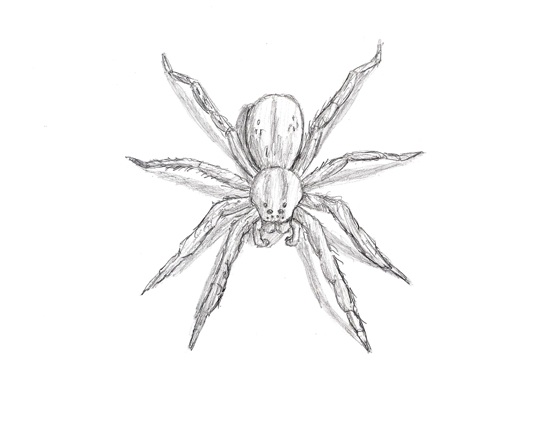 |
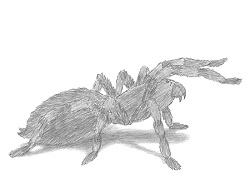 |
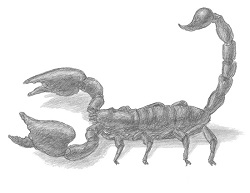 |
In just a few steps, you'll learn how to draw this barn owl using colored pencils. All the tutorials on How2DrawAnimals.com are easy to follow and great for beginners and experienced artists alike. Get art basics while sketching your favorite animals step by step. Each free tutorial on this site has a video tutorial option, as well as step-by-step photos and written text to follow along with. Have fun drawing!

Stay tuned for more free drawing lessons by:
Liking us on Facebook>>
Subscribing on YouTube.com>>
Following us on Instagram>>
To draw this flying barn owl step by step, follow along with the video tutorial below and pause the video after each step to go at your own pace. You may find it easier to follow the step-by-step images below the video. The new lines in each step are shown in red, so you'll know exactly what to sketch next. You may want to open the video in a new tab and use both drawing methods. Take your time and create art at your own pace.
Below you can watch a narrated step-by-step video tutorial:
For the first few steps, don't press down too hard with your pencil. Use light, smooth strokes to begin so that it's easy to erase if you make a mistake.

Step 1: Draw two circles as guides for the barn owl's body and head. The circles are roughly the same size, and the body circle is partially hidden by the head.
DRAWING TIP: To draw a circle, first draw four small marks for the height and width of the circle, and then connect the marks using curved lines. Sketch lightly at first so that it's easy to erase if you make a mistake. But the circles don't have to be perfect. They're just guides.

Step 2: Draw a curved horizontal line across the bird's head. This is a construction line that will help you place the facial features later. Above that, add a curved vertical line for another construction line.
Connect the two circles at the top and bottom using a couple of curved lines, and add the back of the barn owl's body and tail with sloped lines that come together at a point.

Step 3: Sketch a large triangle-like shape for one of the bird's wings. Pay attention to the size of this shape in relation to the body. The owl in this drawing is flying, and it is in the middle of bringing its wings back up after flapping. The wings will be curved.

Step 4: Sketch another large shape to the left of the owl for the bird's other wing. The shape is about as big as the entire body.
That's it for the guidelines! From this point on, press down harder with your pencil for a more defined rendering of a barn owl in flight.

Step 5: Use the construction lines as guides for the placement of the barn owl's eyes. Sketch two small circles, but make the sides pointier. Make the eye on the left thinner because of the perspective. Draw a couple of curved lines around the eye for creases. Add dark pupils in the middle and draw tiny circles for highlights.

Step 6: Below the eyes, lightly sketch a curved triangle shape for the bird's beak. Add short strokes for the feathers at the base of the beak, up the face, and around the eyes.

Step 7: Add the disc-like shape of the face with parallel shapes and wavy lines. The owl's face is similar to the shape of the heart.

Step 8: Sketch the barn owl's first wing using the big triangular shape as your guide. The top and side are one smooth line. At the bottom, following the basic path of the guide, draw a series of short, curved lines for the feathers on the wing.

Step 9: Use the big shape on the left as a guide to draw the other wing. At the bottom, draw long, curved lines for the individual feathers. Make the lines long on the left and gradually make them shorter toward the right. Add the base of the wing by the head and a few short strokes in the shape for another row of feathers.

Step 10: Darken the outer edges of the body guides as well. A large part of the bird's body is hidden by the wings, so only draw the visible sections. Add a couple of short, curved lines at the right for the visible section of the barn owl's tail.

Step 11: Now go over the final lines with an ink pen. Take your time and be careful when you ink your drawing to avoid any accidents! When the ink dries, erase all of the guidelines. Then thicken some lines to indicate shadows. Add some tiny circular shapes and short strokes on the body and wings the barn owl's pattern.

Final Step: Now color your barn owl drawing! With colored pencils, add different shapes of brown on the top part of the body and wings. Color lightly at first and gradually build up to darker colors. Use strokes that go in the direction of the feathers as you color. Slowly and gradually blend the different shades of brown together. Use dark brown to create the individual feathers on the wing. Add a bit of white to the pattern on the feathers.
Leave the owl's face and the inner edges of the wings blank for the white feathers. Color the bird's eyes dark brown, but don't overlap the tiny highlight circles.
Add shadows throughout your barn owl drawing with gray and a bit of blue. Shadows give the figure more dimension and volume.
Add a black background if you'd like, to simulate your barn owl flying at night. Just be careful to not overlap the final drawing! Add tape to the edges of your paper before adding the black background, and remove it when you're done. This creates a clean border.
Thanks for visiting! Subscribe to the How2DrawAnimals YouTube Channel for a new tutorial every week.
To learn how to draw popular cartoon characters, visit EasyDrawingTutorials.com.
To learn how to draw Manga, visit How2DrawManga.com.
RELATED TUTORIALS
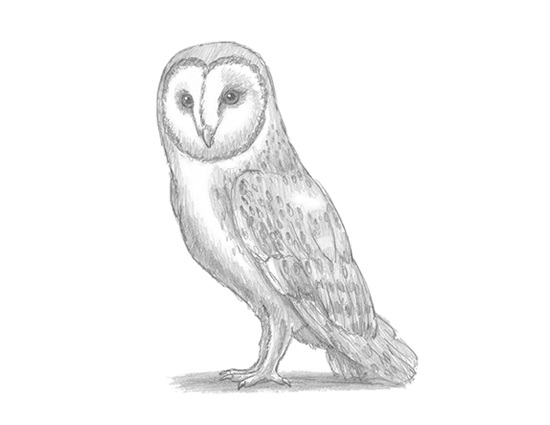 |
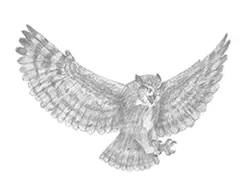 |
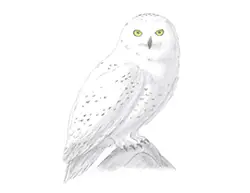 |
In just a few steps, you'll learn how to draw this golden retriever dog. All the tutorials on How2DrawAnimals.com are easy to follow and great for beginners and experienced artists alike. Get art basics while sketching your favorite animals step by step. Each free tutorial on this site has a video tutorial option, as well as step-by-step photos and written text to follow along with. Have fun drawing!

Stay tuned for more free drawing lessons by:
Liking us on Facebook>>
Subscribing on YouTube.com>>
Following us on Instagram>>
To draw this golden retriever dog step by step, follow along with the video tutorial below and pause the video after each step to go at your own pace. You may find it easier to follow the step-by-step images below the video. The new lines in each step are shown in red, so you'll know exactly what to sketch next. You may want to open the video in a new tab and use both drawing methods. Take your time and create art at your own pace.
Below you can watch a narrated step-by-step video tutorial:
For the first few steps, don't press down too hard with your pencil. Use light, smooth strokes to begin so that it's easy to erase if you make a mistake.

Step 1: Draw two circles as guides for the golden retriever's body and one smaller one for the head. The edges of the circles should touch.
DRAWING TIP: To draw a circle, first draw four small marks for the height and width of the circle, and then connect the marks using curved lines. Sketch lightly at first so that it's easy to erase if you make a mistake. But the circles don't have to be perfect. They're just guides.

Step 2: Draw a curved horizontal line across the golden retriever's head. This is a construction line that will help you place the dog's facial features later. Add a curved vertical line on the top left side of the head for another construction line.
Sketch in guides for three of the dog's legs. Two relatively straight lines come down from the middle circle, with short horizontal lines at the ends for the feet. A curved C-like shape and a longer line on the bottom circle will be your guide for drawing the visible hind leg.

Step 3: Draw a small circle on the lower half of the head as a guide for the dog's muzzle. The top edge of this circle should touch the construction line, and the bottom edge should be outside of the head.
Sketch the guides for the ears with straight lines on the sides of the head. Pay attention to the size of the ear shapes in relation to the golden retriever's head.

Step 4: Draw two lines that connect the head to the body to form the guide for the neck. Now draw two longer lines that connect the first two circles to complete the guide for the golden retriever's body. Draw a curved line on the upper, right side of the body as a guide for the tail.
That's it for the guidelines! From this point on, press down harder with your pencil for a more defined rendering of a golden retriever dog.

Step 5: Use the construction lines as guides for the placement of the eyes. Make the shape of the dog's eyes a bit more narrow and add a pointy tip to the sides. Inside each eye, near the middle, draw a tiny dot for the pupils and add a tiny circle to the left of each pupil to represent glare.
Use a series of quick, short pencil strokes above the eyes for the dog's brows. Add a few lines under each eye for more fur.
Place the golden retriever's nose inside the muzzle circle using a series of curved shapes. Add slits for the nostrils and a short vertical line at the bottom, middle part of the nose.

Step 6: Add some short lines above the nose, and begin drawing the mouth underneath. The upper and lower lips are like parallel W shapes. Shade in a little section just under the nose to represent the dark lip pigment.

Step 7: Use the angled lines on the sides of the head as guides to draw the golden retriever's ears. Follow the basic path of the guides but use quick, short pencil strokes to represent fur. Also make the sides more wavy and the bottom edges rounder.
Draw the top part of the dog's head. Then add a few vertical lines made up of short pencil strokes for the loose skin found on the neck.

Step 8: Follow the paths of the leg guides to lightly sketch the dog's front limbs. Darken the lines when you get the shapes of the legs right, adding some longer fur on the right side and toes and nails at the bottom. The fur on the chest will cover much of the leg on the other side, so don't worry about drawing the leg all the way up.

Step 9: Now add the golden retriever's hind leg and tail. Use curved lines for the top of the leg (and a bit of the side of the tummy) and a straight line at the bottom of the foot. Add the dog's toes and tiny nails. Draw the back of the leg and the tail with longer pencil strokes to represent the fur, and a smooth curve for the side of the tail.

Step 10: Complete the golden retriever's body with quick, short strokes along the path of the guides to create a furry texture. Use slightly longer strokes along the underside of the body for longer fur. To indicate the smoother fur on the dog's back, simply darken the outer edges of the initial guides.

Step 11: For a cleaner look, erase as much as you can of the initial guide lines. Don't worry about erasing all of the guides. It's okay to leave some behind. Re-draw any final sketch lines you may have accidentally erased.

Final Step: Add some shading to your golden retriever drawing to give it more dimension and volume. Use a dark value for the dog's nose and around the eyes.
Pick the direction of the light source when shading so that the shadows are consistent with it. Vary the pressure on your pencil to get different degrees of tonal value. Continue shading until the entire body has the appropriate shadows.
Add a cast shadow underneath. This helps ground the dog so it doesn't appear to be floating. Use a lighter value along the edge for the shadow's diffusion.
You can add even more value throughout your drawing for extra detail. Golden retrievers don't have any pattern on their coats like spots or stripes, so just add a medium value to the whole body. Use shorter stokes when you add the value to the head as opposed to the longer strokes you will use for the body. As you add the value, separate each individual stroke a bit so that the white of the paper comes through and creates a furry-looking texture.
Use strokes that go in the general direction of the fur as you add the value. The strokes on the golden retriever's chest should have a vertical orientation, while farther back along the body, the strokes should be angled. Don't worry about shading too smoothly. The rough value gives the dog's coat a furry texture.
Shading can be time-consuming, so be patient and take breaks. If you have a pet golden retriever or a similar breed, try to duplicate its characteristics on your drawing!
Thanks for visiting! Subscribe to the How2DrawAnimals YouTube Channel for a new tutorial every week.
To learn how to draw popular cartoon characters, visit EasyDrawingTutorials.com.
To learn how to draw Manga, visit How2DrawManga.com.
RELATED TUTORIALS
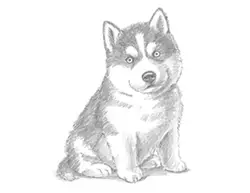 |
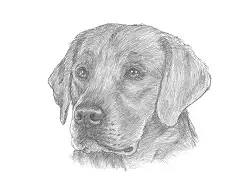 |
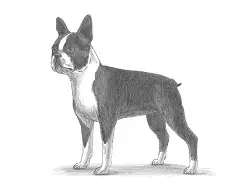 |
In just a few steps, you'll learn how to draw this eastern chipmunk using colored pencils. All the tutorials on How2DrawAnimals.com are easy to follow and great for beginners and experienced artists alike. Get art basics while sketching your favorite animals step by step. Each free tutorial on this site has a video tutorial option, as well as step-by-step photos and written text to follow along with. Have fun drawing!

Stay tuned for more free drawing lessons by:
Liking us on Facebook>>
Subscribing on YouTube.com>>
Following us on Instagram>>
To draw this eastern chipmunk with an acorn step by step, follow along with the video tutorial below and pause the video after each step to go at your own pace. You may find it easier to follow the step-by-step images below the video. The new lines in each step are shown in red, so you'll know exactly what to sketch next. You may want to open the video in a new tab and use both drawing methods. Take your time and create art at your own pace.
Below you can watch a narrated step-by-step video tutorial:
For the first few steps, don't press down too hard with your pencil. Use light, smooth strokes to begin so that it's easy to erase if you make a mistake.

Step 1: Draw a big circle in the middle of the page as a guide for the eastern chipmunk's body and one smaller one for the head. The edges of the circles should overlap slightly.
DRAWING TIP: To draw a circle, first draw four small marks for the height and width of the circle, and then connect the marks using curved lines. Sketch lightly at first so that it's easy to erase if you make a mistake. But the circles don't have to be perfect. They're just guides.

Step 2: Draw an angled line that points downward and bisects the head circle. This is a construction line that will help you place the chipmunk's facial features later. Add a curved line on the bottom right side of the head for the muzzle.

Step 3: Sketch the guides for the ears as two arcs on top of the head. Pay attention to the size of the ear shapes in relation to the eastern chipmunk's head. Then draw two curved lines that connects the head circle and the body circle.

Step 4: With straight lines, sketch in guides for two of the eastern chipmunk's legs. Pay attention to how small the front leg is in relation to the large hind leg. A curved C-like shape coming off the bottom of the body circle will be your guide for the chipmunk's large tail.
That's it for the guidelines! From this point on, press down harder with your pencil for a more defined rendering of an eastern chipmunk.

Step 5: Use the construction lines as guides for the placement of the large, round eyeball. Draw some curved lines around the chipmunk's eye and indicate a bit off fur with quick, short pencil strokes. Add a tiny circle to the top, left of the eyeball to represent glare. You will color the dark eyeball in later, but avoid the glare circle.
At the tip of the muzzle guide, place the eastern chipmunk's nose inside the muzzle circle using a series of curved shapes.

Step 6: Draw the ear by following the guide. Add the inner ear structure with an oval and some quick, short pencil strokes. Use even smaller quick, short pencil strokes to indicate the fur at the base of the ear.
Draw the rest of the muzzle and mouth by following the muzzle guide. Note the short strokes on the chin, which creates a furry look. Chipmunks, like hamsters, can hold a lot in their cheek pouches, but there is no food in this eastern chipmunk's cheeks! It will be holding a nut in its front paws, which you will draw shortly.

Step 7: Now fill in the rest of the head using the same technique: Follow the guides with quick, short pencil strokes.

Step 8: Using the leg guidelines, create the furry shapes of the legs with quick, short pencil strokes. Add arcs for the small digits on the front leg. The bottom foot and its toes is much longer. Each foot has five toes and claws, but not all of these are visible in your rendering.

Step 9: Add a nut in its paws and a little bit of the other limb that's visible. Quick, short strokes create the rest of the chipmunk's body. Leave a lot of space open at the rear so you can add the tail in the next step.

Step 10: With longer pencil strokes, draw the tail around the curved guide. With the same long pencil strokes, follow the curve of the chipmunk's back, add four stripes.

Step 11: For a cleaner look, erase as much as you can of the initial guide lines. Don't worry about erasing all of the guides. It's okay to leave some behind. Re-draw any final sketch lines you may have accidentally erased.

Final Step: Now ink your drawing. Use strokes that go in the direction of the eastern chipmunk's fur. On the head, the fur radiates outward for the nose, and on the back, the longer strokes rotate along the back to follow the curvature of the body. Fill in the eye, being careful not to cover the small circle you drew for the highlight. Add longer strokes on the muzzle for the whiskers.
With colored pencils, add color your chipmunk drawing! With different shades of brown, color the main part of the body. Start lightly and gradually build up to darker colors. Just like with the inks, use strokes that go in the direction of the fur.
Use dark brown to color the top part of the head, leaving a section around the eye for the white fur. Use dark shades of brown to create shadows throughout the eastern chipmunk's body. Shadows give the figure more dimension and volume. Light shades of brown create highlights. Add a bit of blue to the shadows and orange and yellow to the highlights.
Continue to use different shades of brown throughout the chipmunk's body and slowly blend the colors together. As you color, separate each stroke a bit so the white of the paper comes through and creates the look of a furry texture.
Draw a cast shadow underneath your eastern chipmunk using gray and a bit of blue. Coloring can be time-consuming, so be patient and take breaks! Keep coloring until you're happy with the result.
Thanks for visiting! Subscribe to the How2DrawAnimals YouTube Channel for a new tutorial every week.
To learn how to draw popular cartoon characters, visit EasyDrawingTutorials.com.
To learn how to draw Manga, visit How2DrawManga.com.
RELATED TUTORIALS
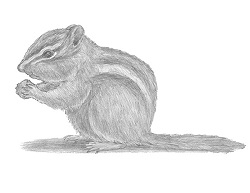 |
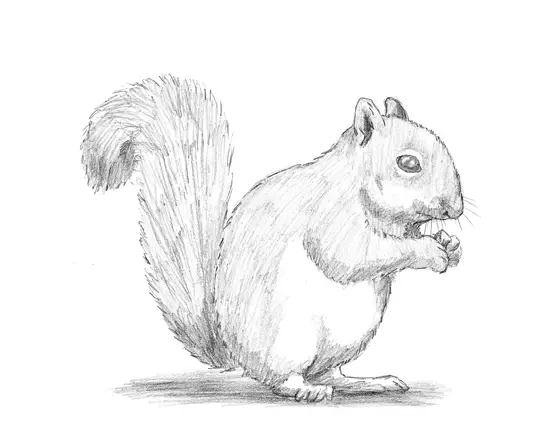 |
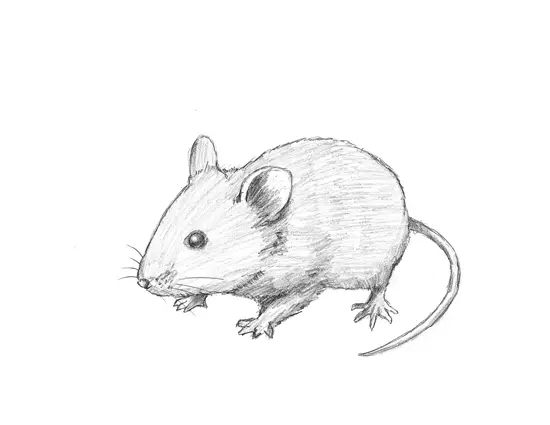 |
In this free art lesson, you'll learn how to draw a triceratops dinosaur step-by-step. Triceratops means "three-horned face." In addition to adding three horns on this dinosaur, you'll also draw a large bony frill on its head. Because of these characteristics, Triceratops is one of the most well-known dinosaurs and is very fun to draw! It lived at the same time as the Tyrannosaurus and was likely hunted by it, so if you want another dinosaur after this, check out this T. rex tutorial>>

Stay tuned for more free drawing lessons by:
Liking us on Facebook>>
Subscribing on YouTube.com>>
Following us on Instagram>>
All of the tutorials on How2DrawAnimals.com are good drawing tutorials for beginners and experienced artists alike. The online tutorials are easy to follow; they teach you the art basics while showing you how to draw animals step by step. Each animal has a video tutorial option, as well as step-by-step photos and written text to follow.
To draw this triceratops dinosaur step by step, follow along with the video tutorial below and pause the video after each step to go at your own pace. You may find it easier to follow the step-by-step images below the video. The new lines in each step are shown in red, so you'll know exactly what to sketch next. You may want to open the video in a new tab and use both drawing methods. Take your time and create art at your own pace.
Below you can watch a narrated step-by-step video tutorial:
For the first few steps, don't press down too hard with your pencil. Use light, smooth strokes to begin so that it's easy to erase if you make a mistake.

Step 1: With your pencil, lightly sketch three circles overlapping each other as guides for the triceratops' body and head. The circles don't have to be perfect. They're just guides. The circle on the left should be higher and smaller than the others. So your finished art piece looks anatomically correct, pay close attention to your sketch in these early stages. Make sure to get the sizes at the correct proportions now.

Step 2: Draw two curved lines within the head shape to help you place the dinosaur's facial features later on. Under the body circles, make four guides for the legs. Bend the lines to indicate the joints on the legs. Note how long these leg guides are in relation to the body.

Step 3: Using the guidelines in the head, sketch another, smaller circle coming off the head circle. This creates the guide for the triceratops' muzzle. Draw the guide for the large frill on top of the head.

Step 4: Two lines coming off the top of the head will help you draw the triceratops' horns later on. Draw the tail at the end of the dinosaur's body with two curved lines that come to a point at the end.
That's it for the guidelines! From this point on, press down harder with your pencil for a more defined rendering of a triceratops dinosaur.

Step 5: Draw the triceratops' eye inside using your original sketch lines as guides for placement. The shape of the eye is similar to a football. Add a circle inside of it for the eyeball. Shade the pupil and add a tiny circle to represent glare. Make some small curved lines above the eye for the brow and more lines under it for extra detail.
Inside the small circle, sketch in this dinosaur's open mouth and tongue. The beaklike mouth comes to a point near the middle. Draw a lines around the triceratops' beak and inside the mouth for the tongue. We know the skull shape of this dinosaur from fossil records, but no one knows exactly what the triceratops looked like when it lived in the Late Cretaceous period. To help you draw, you can use artistic renderings as reference to see different angles of what the mouth could have looked like.

Step 6: Draw the triceratops' three horns and the little nostril using the guidelines for placement. Using smooth lines for the horns and taper the shapes up to a point at the tips. Add some short lines around the horn bases to indicate the skin there. For the nostril, create a small line that looks like an open parenthesis "(" and a comma-like shape "," inside the smallest circle guide.

Step 7: Use the arc above the head as a guide to draw the triceratops' frill. Follow the line and add tiny triangle-like shapes all around to form the bony part of the frill called the epoccipitals. Add some additional lines throughout the dinosaur's frill and neck to finish up the head. Note the additional horn-like protrusion on the cheek.

Step 8: Use the lines under the body as guides to draw this dinosaur's legs. Lightly pencil in the shape at first to get the structure right, bending the limbs at the joints. When you're happy with what you have, go ahead and darken it. Sketch a few curved lines throughout to indicate the creases on the skin and muscle structure. Add four digits at the bottom using a few curved lines.

Step 9: Use the lines under the back portion of the body as guides to draw the triceratops' hind legs. Note how the leg on this side of the body differs in structure from the front legs. (The other hind leg is mostly hidden.) The curves you create with your pencil should make the legs look muscular. At the bottom, add the digits just as you did with the front feet.

Step 10: Draw the rest of the triceratops' body by using the lines as guides. Draw a few bumps throughout the dinosaur's skin for a rougher look as you darken the guide lines.

Step 11: For a cleaner look, erase as much as you can of the initial guide lines. Don't worry about erasing all of them. It's okay to leave some behind. Also re-draw any final sketch lines that you may have accidentally erased.

Final Step: Add some shading to your triceratops to give it more dimension and volume. Pick the direction of the light source when shading so that the shadows are consistent with it. Vary the pressure on your pencil to get different degrees of tonal value. Add a cast shadow underneath your dinosaur. This helps ground the triceratops so it doesn't appear to be floating.
You can add more value throughout your triceratops drawing for extra detail. Nobody is exactly sure as to what a triceratops dinosaur looked like, so this part is up to you! Add spots or patches or even stripes! If you want this look, add a solid value first. Then add random squiggly lines all over that resemble spots.
You can PAUSE the video to use this drawing as reference and at any other time you need help.
Thanks for visiting! Subscribe to the How2DrawAnimals YouTube Channel for a new tutorial every week.
To learn how to draw popular cartoon characters, visit EasyDrawingTutorials.com.
To learn how to draw Manga, visit How2DrawManga.com.
RELATED TUTORIALS
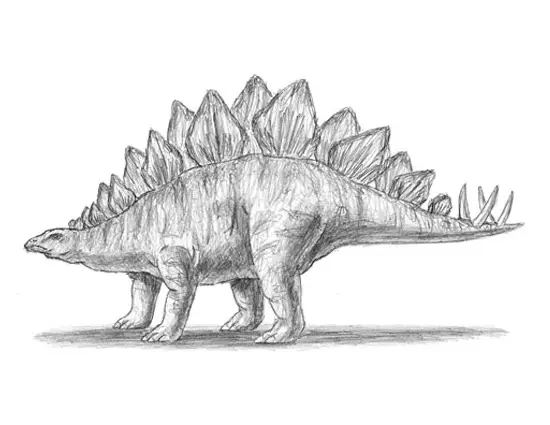 |
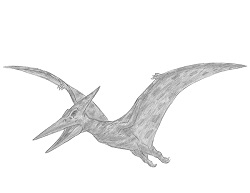 |
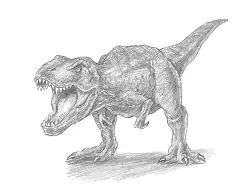 |






